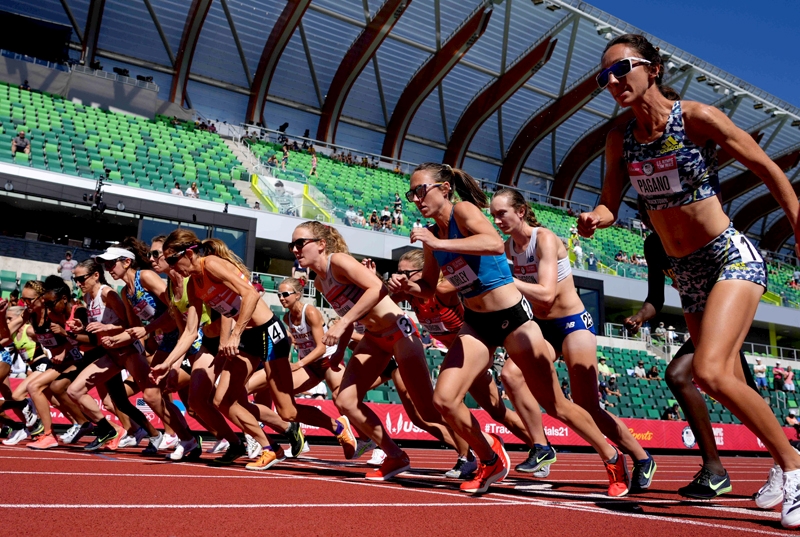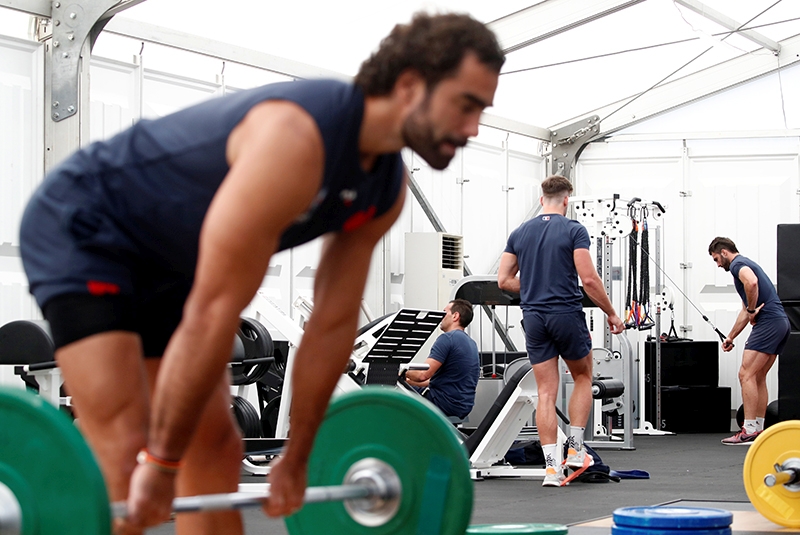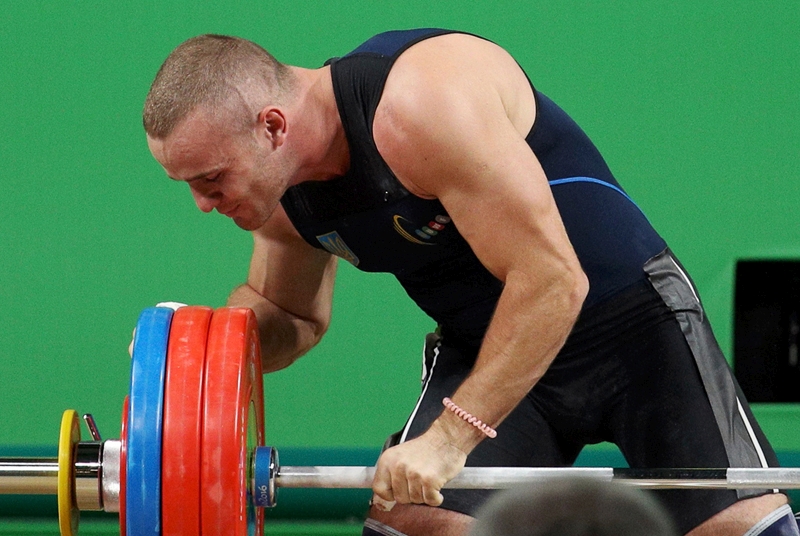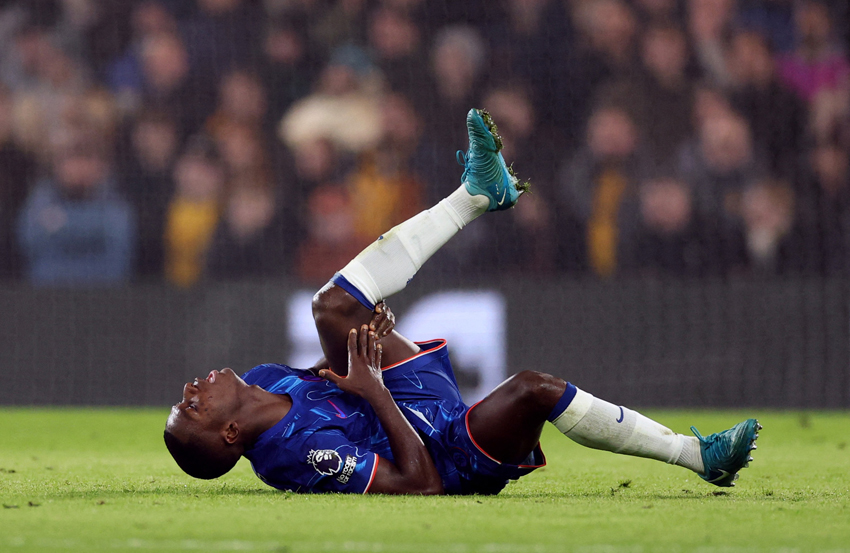You are viewing 1 of your 1 free articles. For unlimited access take a risk-free trial
Muscle blood flow: can less be more for runners?

Brand new research suggests that running training with restricted leg muscle blood flow could result in increased fitness gains. SPB investigates
The key to a successful training program is efficiency - ie to obtain the greatest fitness and performance gains possible per unit of time and effort expended. This is why strategies such as interval training for endurance performance and supersets/drop sets/eccentric emphasis for strength performance have found favour among coaches and athletes. Intelligent application of these strategies allows athletes to get great gains in training but remain fresher.Blood flow restriction for improved training efficiency
While much research into more efficient ways of training has focussed on training structure, findings from the world of sports injury rehabilitation are also providing food for thought. In particular, there’s been a growing interest in a training approach known as blood-flow restriction training’. As Andrew Sheaff explains in his article published last summer (see here) blood-flow restriction training describes a form of training where restrictive wraps or cuffs are placed on the upper portion of the limbs to occlude venous (lower pressure, flowing towards the heart), but not arterial (high pressure flowing away from the heart) blood flow. Lower intensity training is then performed while these wraps remain in place.Originally pioneered as a method of helping injured athletes regain strength more rapidly while maintaining a gentle training intensity, more recent research has investigated the use of blood flow restriction (from here on referred to as BFR) training as a method for producing strength and muscle mass gains in uninjured athletes. For example, two fairly recent meta-analyses (studies that pool all the data from multiple previous scientific studies on a topic), compared the impact of lower-loading, blood-flow restriction strength training for legs on muscle strength and growth to traditional high intensity training(1,2). When combining all of the studies, the researchers concluded that lower-intensity blood-flow restriction training on the legs was equivalent to high-intensity resistance training for the development of muscle mass. In terms of muscle strength one of the meta-analyses found that strength gains were equivalent(1), while the other found that strength improvements were slightly higher following high intensity resistance training(2).
Box 1: Why does blood flow restriction training work?
There’s no doubting the effectiveness of BFR when it comes to building muscle size and strength, but why exactly does restricting blood flow during exercise produce these benefits? The truth is that we don’t know for sure. However, a number of mechanisms have been proposed for the positive and superior (compared to conventional training) adaptations, which included the following:- An increase in the recruitment of type II fast-twitch fibers (because the reduction of available oxygen impairs slow twitch [endurance] fiber recruitment)(3).
- Muscle cell swelling, which promotes a greater inflow of active substances required to stimulate growth(4).
- An increase in the production of signalling molecules such as nitric oxide, which activate anabolic pathways(5).
- An increased secretion of anabolic hormones such as human growth hormone and testosterone due to a more anaerobic environment and increased lactate accumulation(6,7).
BFR for endurance
Given that the use of BFR training was pioneered in the context of injury, it’s not surprising that most of the research into BFR has explored the effects on muscle size, strength and the ability of athletes undertaking BFR to resume normal training and return to sport. However, the most recent research into BFR training has begun to look at the potential benefits for endurance athletes such as runners, and the results seem to be promising. And now a brand new study by Taiwanese scientists provides further evidence that the use of BFR during sessions of low-intensity running could produce direct benefits in running performance(10).In this study, which was published in the Journal of Strength and Conditioning Research, researchers investigated the effects of an 8-week program of 3 days per week running training combined with blood flow restriction on cardiopulmonary function and muscle strength in endurance athletes. Twenty endurance-trained male athletes (age 19–25 years) were pair matched for fitness levels and then randomly assigned to one of two groups:
- Running training with BFR
- Running training without BFR
Figure 1: Band location for BFR runners

The findings
After the 8-week training program, the outcomes in the BFR-trained runners were superior to the runners who had performed normal running training. Compared with the normally training runners, the BFR-trained runners:- Experienced a significantly greater increase in VO2max (5.1% vs. -1.1%)
- Exhibited greater isokinetic knee extensor strength (16.5% vs. −5.9%)
- Showed higher leg muscle mass (10.3kg vs. 9.7kg)
- Had a better testosterone to cortisol (T:C) ratio at 24 hours after training sessions (testosterone is a muscle building hormone while cortisol is a hormone associated with stress and muscle breakdown). The BFR runners maintained their T:C ratios, whereas the normally trained runners experienced a rise in cortisol relative to testosterone.
Conclusions and implications
The researchers concluded that running training combined with BFR may therefore be a practical training strategy for improving aerobic function and muscle strength in endurance runners. Of course, this is just one study so more research would be needed a) to confirm these results and b) to see how this translates into running performance under maximal (race) conditions. However, the initial results are very promising, especially given the low intensities of running used. This suggests at the very least that injured runners who are seeking to try and maintain fitness following an injury may have much to gain and little to lose by trying BFR running.In terms of practice, it’s important to create the appropriate degree of blood-flow restriction. You should place the bands as high up on the thigh as you can, right at the top of the groin and right along the gluteal fold (where the bottom of the butt meets the thigh – see figure 1). Once you have the bands in place, tighten them according to the appropriate pressure as indicated by your restriction cuff. In the study above, the pressure was set at 1.3 x resting systolic blood pressure, and that’s what you should use too (so you will need to know what your systolic pressure is). Remember too, any running sessions with BFR should be low/easy intensity – not hard! You should also limit your training time to 15-20 minutes maximum and break that time up into sets of no more than five minutes.
References
- Sports Med. 2018 Feb;48(2):361-378
- Scand J Med Sci Sports. 2020 May;30(5):837-848
- Sports Med (Auckland, NZ) 2015;45(2):187–200
- Med Hypotheses. 2012;78(1):151–154
- Int J KAATSU Train Res. 2005;1(2):71–76
- Front Physiol. 2019;10:614
- Clin Physiol Funct Imaging. 2017;37(6):734–740
- J Sports Sci Med. 2020;19(2):374–382
- Sports Med (Auckland, NZ) 2010;40(12):1037–1053
- J Strength Cond Res May 2022. Vol36 (5); 1228-1237
Newsletter Sign Up
Testimonials
Dr. Alexandra Fandetti-Robin, Back & Body Chiropractic
Elspeth Cowell MSCh DpodM SRCh HCPC reg
William Hunter, Nuffield Health
Newsletter Sign Up
Coaches Testimonials
Dr. Alexandra Fandetti-Robin, Back & Body Chiropractic
Elspeth Cowell MSCh DpodM SRCh HCPC reg
William Hunter, Nuffield Health
Keep up with latest sports science research and apply it to maximize performance
Today you have the chance to join a group of athletes, and sports coaches/trainers who all have something special in common...
They use the latest research to improve performance for themselves and their clients - both athletes and sports teams - with help from global specialists in the fields of sports science, sports medicine and sports psychology.
They do this by reading Sports Performance Bulletin, an easy-to-digest but serious-minded journal dedicated to high performance sports. SPB offers a wealth of information and insight into the latest research, in an easily-accessible and understood format, along with a wealth of practical recommendations.
*includes 3 coaching manuals
Get Inspired
All the latest techniques and approaches
Sports Performance Bulletin helps dedicated endurance athletes improve their performance. Sense-checking the latest sports science research, and sourcing evidence and case studies to support findings, Sports Performance Bulletin turns proven insights into easily digestible practical advice. Supporting athletes, coaches and professionals who wish to ensure their guidance and programmes are kept right up to date and based on credible science.











